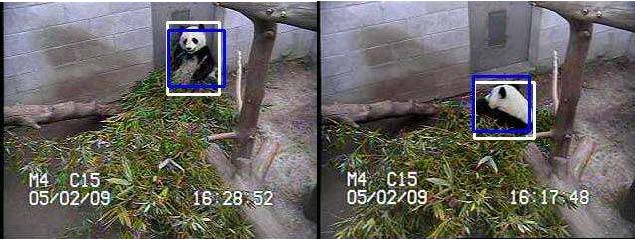
| Home | People | Research | Publications | Demos |
| News | Jobs |
Prospective Students |
About | Internal |

| Amorphous object detection in the wild | |

|
|
|
In this work, we investigate the detection of a large class of objects not covered by these two scenarios. These are objects that lack many of the features commonly used as cues for object detection, and which we denote amorphous. Strictly speaking, amorphous objects have no distinctive edge configurations, texture, or a well defined shape. They can be found in science fiction movies, in the form of jelly-like creatures that can take any desirable shape. While, in the real world, truly amorphous objects are rare, many real objects are close to amorphous (e.g. a jellyfish, a bean bag, etc.), and an even larger set quasi-amorphous. By this, we refer to objects that can have very characteristic appearance under some canonical poses, but appear amorphous under others. Many such examples exist in the animal world. Pandas are one such example. While the Panda face is very iconic, faceless poses tend to be quite amorphous. To study the problem of amorphous object detection we have assembled a dataset of images from a panda family leaving in a natural habitat. The dataset was collected at the San Diego Zoo panda exhibit using images made available by the Panda Cam system. It contains images collected with multiple cameras, from multiple sections of the Panda habitat, at different times of day, with different atmospheric conditions, etc. We have also developed a detector of amorphous objects, based on discriminant saliency networks using complex saliency templates. The figure below illustrates the detector architecture. It is a two layer network that replicates the neurophysiology of the early visual system, and relies extensively on saliency modeling. |
|

|
|
|
The figure below shows some examples of images in the PandaCam dataset and the detector output. The white box is the detection ground-truth, blue boxes indicate correct detections and red boxes false positives. | |

|
|
|
The plot below shows a comparison with various state-of-the-art object detection techniques from the literature. VJ:[Viola and Jones, CVPR 2001], ScSPM:[Yang et al. CVPR 2009], SPMK:[Lazebnik et al. CVPR 2006], partModel:[Felzenszwalb et al. CVPR 2008] | |

|
|
|
See the papers below for more details. | |
| Biologically Plausible Saliency Mechanisms Improve Feedforward Object Recognition Sunhyoung Han and Nuno Vasconcelos Vision Research, vol. 50(22), 2295-2307, October 2010 [pdf] [doi:10.1016/j.visres.2010.05.034] |
|
|
Discriminant saliency, the detection of suspicious coincidences, and applications to
visual recognition Dashan Gao, Sunhyoung Han and Nuno Vasconcelos, IEEE Transactions on Pattern Analysis and Machine Intelligence, vol. 31(6), pp. 989-1005, June 2009. ?IEEE [ps][pdf] [doi:10.1109/TPAMI.2009.27] |
|
|
Biologically Plausible Detection of Amorphous Objects in the wild
Sunhyoung Han, and Nuno Vasconcelos CVPR Workshop on Biologically-Consistent Vision 17-24, June 2011 [pdf] [presentation] |
|
| dataset: | pandaCam dataset |
| Contact: | Sunhyoung Han Nuno Vasconcelos, |
![]()
©
SVCL